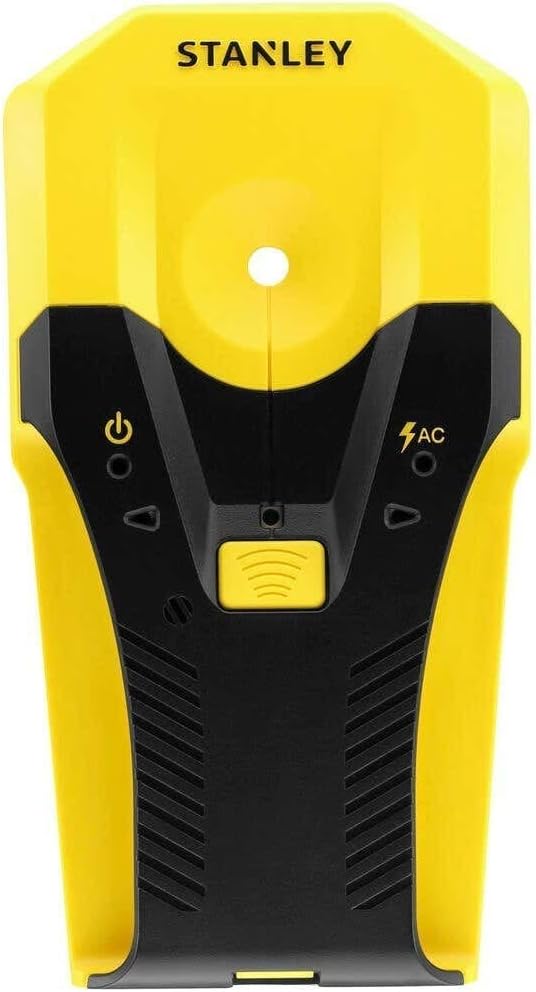About this deal
All electronic stud finders use sensors to measure the change in density in the wall. Typically, you must place the stud finder on a part of the wall without studs to ensure it gets calibrated before sliding it across the wall to find studs. Once the finder locates a stud, the results are displayed on an LCD screen. The Stanley STHT0-77406 S200 Stud & Cable Detector is a versatile tool that can help you find studs, joists, and live AC wires behind drywall and other common building materials. It is the perfect tool for DIYers and professionals alike who need to accurately locate hidden structures before drilling, hanging pictures, or installing shelving. This detector features two detection modes: stud and cable. In stud mode, the tool uses electronic signals to locate the edges of wood and metal studs up to 19mm (3/4") deep. In cable mode, the tool can identify live AC wires up to 51mm (2") deep. TheV-shaped marking channel allows accurate marking. Features: Ultrasonic detectors are much pricier, and use sound waves to map out the inside of the wall. These aren’t typically used in home contexts, as they are heavy-duty units for mapping out the internal makeup of a wall. The truth is that commercial and industrial buildings require a different level of accuracy and usability than residential homes. Coordinating miles and miles of studs, piping, and electrical wiring is difficult enough, and that’s not considering the complexity of many commercial buildings. Professionals in this industry usually look for a tool with more advanced features, and with a sensor accuracy that exceeds the typical needs of homeowners.
Truth be told, on the consumer market your primary forms of stud finder sensors are going to be magnetic and electronic–which is completely fine, as both kinds of sensors are more than adequate for day-to-day use. The primary factor in differentiating finder types is the project you have in mind and the needs you have for that project. Over time, the sensitivity and accuracy of magnetic sensors improved, and new methods of looking for studs behind walls began to revolutionize these devices. Types of Stud Finders If you are willing to put that money up, however, this is a great unit that can serve as the go-to tool when you need it. I focused primarily on stud finders that homeowners could use for more-or-less complicated household tasks. And while many of the electronic stud finders in the above listings are powerful, they aren’t necessarily suitable for more commercial or industrial applications.Edge: An edge stud finder finds the edge of the stud. After finding that edge, we determined you have to approach the stud from the other side to find its other edge and determine its width. Three: Determine what kind of accuracy you need. Just wanting to hang pictures? Basic magnetic finders might be just what you need.
Center: Center finders use multiple sensors to gauge the stud’s entire width and provide you with the location of the center of the stud.
Report an Issue
The magnets contained in the stud finders would locate metal behind existing walls and signal to the operator that a stud was nearby. The more metal contained in the stud, the easier it was to find. As you might expect, this caused several issues: Some electronic stud finders can detect live electric cables and different types of metal in addition to finding studs. This feature-set ensures that you’re not drilling into any sensitive or dangerous equipment behind your wall. Brand
Related:
 Great Deal
Great Deal 